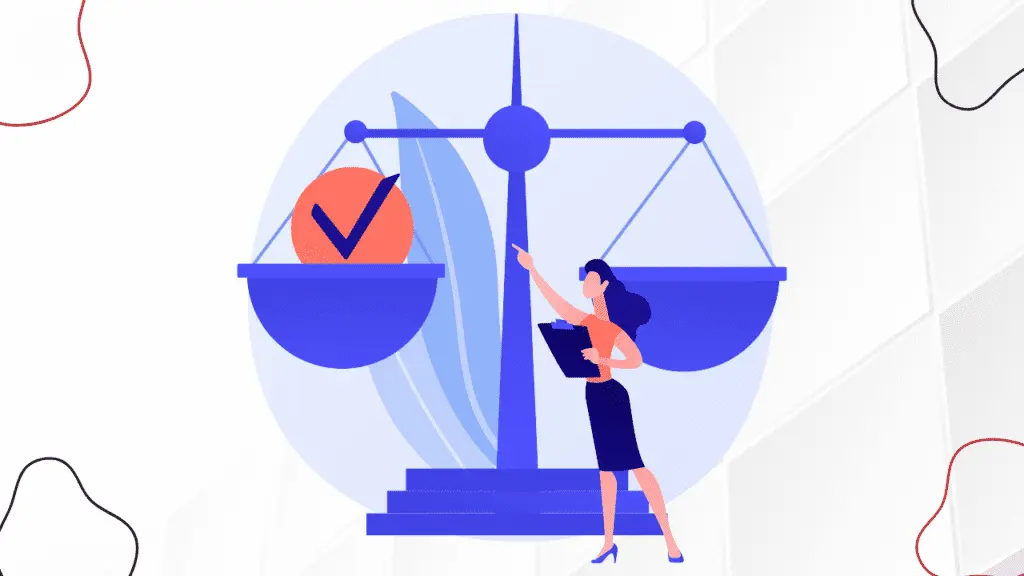Beyond textbooks and lesson plans, discover the top 10 responsibilities of a teacher. From igniting curiosity to shaping responsible citizens, this guide explores the essential roles teachers play in shaping young minds and a brighter future.
Dive into their impact on academic excellence, personal growth, and active citizenship, and gain a deeper appreciation for the heroes of the classroom.
List of Top 10 Responsibilities of a Teacher
There are several responsibilities of a teacher he/she can perform in their daily routine in the class. Class may be of a school or a learning environment where many people gather for learning. Some responsibilities of a teacher is below:
- Assessing student progress and participation
- Organizing school activities
- Creating lesson plans
- Planning
- Choosing educational materials
- Communicating with parents
- Encouraging students
- Executing new teaching methods
- Grading tests
- Learning and Adapting
- Providing a safe learning environment
- Providing feedback
- Supervising students
- Understanding the curriculum
- Classroom management
- Evaluation and assessment
- Inspiration
- Creating and distributing educational content
- Leveraging technology to support learning
- Encouraging student participation
1. Assessing student progress and participation
Assessing student progress and participation is a multifaceted responsibility that lies at the heart of effective teaching.
It’s not just about assigning grades, but about gathering invaluable insights to guide personalized learning, foster motivation, and ensure all students reach their full potential. Here’s a closer look at the key aspects of this complex task:
Formal Assessments:
- Tests and quizzes: Assess mastery of specific knowledge and skills learned through lessons or units.
- Projects and presentations: Evaluate understanding through practical application and communication skills.
- Essays and assignments: Analyze critical thinking, writing skills, and ability to analyze information.
- Portfolios and collections of student work: Showcase growth and development over time, revealing strengths and areas for improvement.
Informal Assessments:
- Class discussions and observations: Gauge student engagement, understanding of concepts, and critical thinking skills.
- One-on-one interactions and conferences: Provide personalized feedback and identify individual needs.
- Exit tickets and quick quizzes: Assess learning at the end of a lesson to inform further instruction.
- Group work and collaborative activities: Observe teamwork skills, communication, and problem-solving abilities.
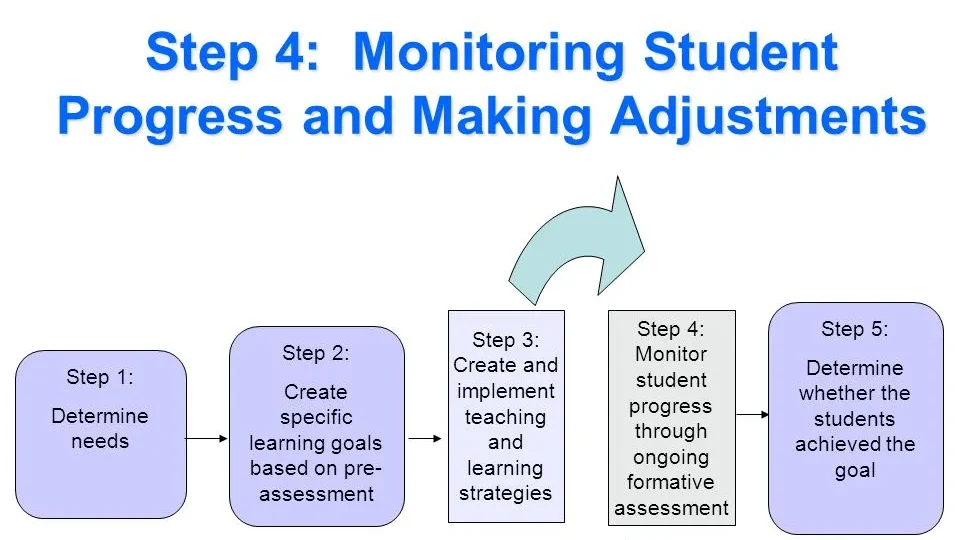
2. Organizing school activities
Organizing school activities isn’t just about logistics; it’s about crafting unforgettable experiences that enrich learning, foster community, and spark genuine student enthusiasm. Let’s dive into the key pillars of this vital responsibility:
1. Planning and Logistics:
- Align with Learning Objectives: Ensure activities support curriculum goals, reinforcing key concepts and offering practical application opportunities.
- Choose Appropriate Activities: Consider age, interests, learning styles, and available resources when selecting activities.
- Develop a Clear Timeline: Allocate time for preparation, setup, activity completion, and reflection, optimizing flow and efficiency.
- Budget and Resource Management: Secure necessary materials, equipment, and personnel within budgetary constraints.
- Delegate and Collaborate: Utilize student volunteers, teachers’ aides, or parent volunteers to share responsibilities and maximize participation.
2. Communication and Connection:
- Inform Stakeholders: Communicate activity details, including purpose, schedule, and participation expectations, to students, parents, teachers, and other staff.
- Partner with Colleagues: Collaborate with other teachers to co-organize activities, share resources, and leverage expertise.
- Engage Parents and Volunteers: Encourage parent and community involvement, fostering ownership and collaboration.
- Ensure Accessibility: Adapt activities to cater to diverse abilities and ensure all participants can engage meaningfully.
3. Safety and Supervision:
- Conduct Risk Assessments: Identify potential hazards and implement safety protocols to protect students throughout the activity.
- Clear Instructions and Expectations: Set clear rules and guidelines for behavior, participation, and responsible conduct.
- Active Supervision: Maintain constant vigilance, provide guidance and support, and address any issues or concerns promptly.
- Foster an Inclusive Environment: Ensure all participants feel safe, valued, and respected during the activity.
4. Evaluation and Reflection:
- Gather Feedback: Conduct surveys, hold discussions, or observe to gauge the effectiveness and enjoyment of the activity.
- Analyze Feedback and Improve: Reflect on the experience, identify strengths and weaknesses, and adapt future activities based on learnings.
- Celebrate Successes: Recognize the efforts of students, teachers, and volunteers, reinforcing the value and positive impact of school activities.
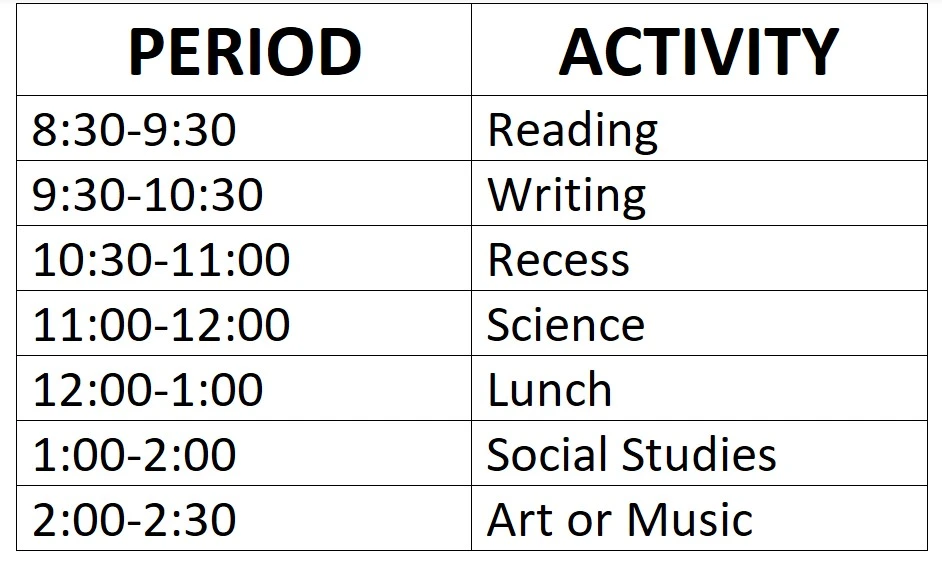
3. Creating lesson plans
Crafting exceptional lesson plans is the cornerstone of impactful teaching. These blueprints for learning ensure effective use of time, engaging activities, and clear pathways toward achieving learning objectives. Let’s into the key elements of this transformative endeavor:
1. Alignment and Foundations:
- Curriculum Compass: Align lesson objectives with curriculum standards and learning goals, ensuring coherence and consistency.
- Prior Knowledge Gauge: Assess students’ existing knowledge and skills to build upon existing foundations and avoid unnecessary repetition.
- Target Audience Understanding: Consider students’ age, interests, and learning styles when choosing methods and activities for optimal engagement.
2. Building the Learning Structure:
- Captivating Hook: Spark curiosity and set the stage for learning with an intriguing question, real-world connection, or interactive activity.
- Clear and Concise Explanations: Present key concepts and information that is easily understood, utilizing visuals and varied explanations as needed.
- Engaging Activities: Design a mix of activities like lectures, discussions, group work, individual tasks, and technology integration to cater to diverse learning styles and keep students engaged.
- Formative Assessment: Integrate formative assessments throughout the lesson to gauge understanding, identify areas for improvement, and adjust instruction as needed.
3. Differentiation and Personalization:
- Tailoring the Journey: Provide additional support or challenge where needed based on individual learning levels and abilities.
- Multiple Pathways to Mastery: Offer diverse activities and resources to allow students to reach the same learning objectives through different means.
- Celebrating Individual Strengths: Recognize and encourage students’ unique talents and interests, fostering a sense of ownership and motivation.
4. Reflection and Refinement:
- Learning Mirror: Analyze the effectiveness of the lesson based on student engagement, understanding, and completion of tasks.
- Continuous Improvement: Adapt and refine the lesson plan for future use, incorporating improvements and addressing any challenges faced.
- Collaboration and Growth: Share and discuss lesson plans with colleagues to exchange ideas, share best practices, and learn from each other’s experiences.
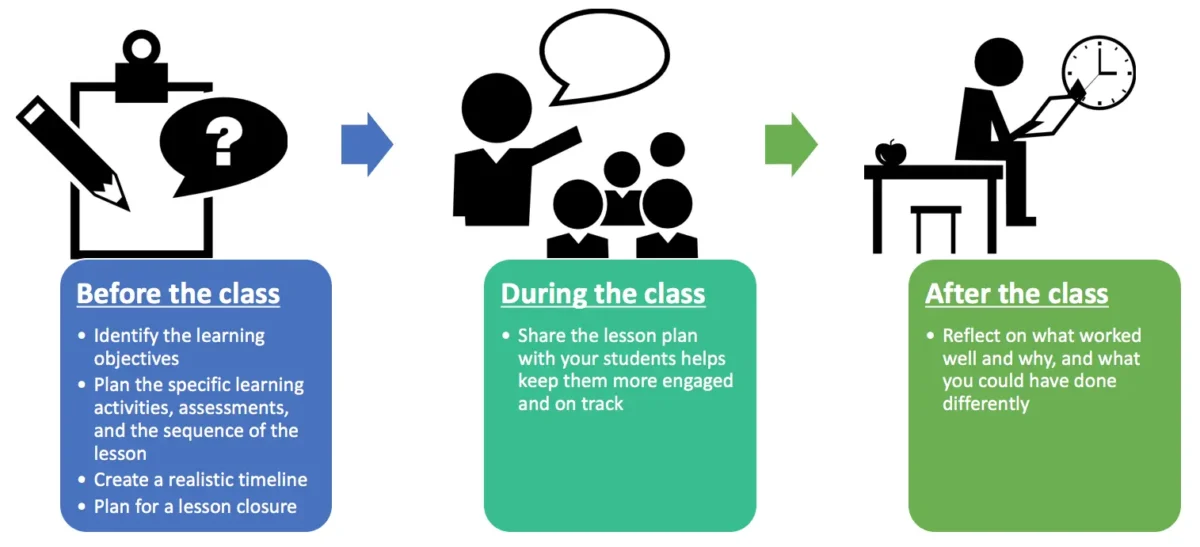
4. Planning
For a teacher, planning transcends mere organization; it’s the cornerstone of impactful learning, ensuring every minute in the classroom serves a purpose and empowers students to reach their full potential.
Let’s explore the multifaceted ways in which planning is a crucial responsibility for teachers:
1. Designing Compelling Learning Journeys:
- Crafting Lesson Plans: Teachers meticulously plan engaging and effective lessons aligned with curriculum standards, student needs, and diverse learning styles. This involves setting clear objectives, choosing to engage activities, and incorporating formative assessments to gauge progress and adapt instruction.
- Mapping Long-Term Curriculum: Beyond individual lessons, teachers plan their curriculum for the entire term or year, ensuring coherence and sequence in learning. They identify key concepts, skills, and assessments, ensuring a holistic and progressive learning experience.
- Enriching Experiences: Teachers plan various activities like field trips, guest speakers, and project-based learning opportunities to complement classroom learning and provide real-world connections. This enhances engagement, fosters student-driven exploration, and strengthens understanding.
2. Differentiating for Individual Needs:
- Accommodating Diverse Learners: Effective planning allows teachers to cater to different learning styles, abilities, and prior knowledge. They design activities with varying levels of complexity, provide additional support or challenge where needed, and use strategies like personalized learning programs to ensure all students thrive.
- Fostering Growth Mindsets: Planning lessons that encourage critical thinking, problem-solving, and collaboration nurture a growth mindset in students. This empowers them to embrace challenges, persevere through setbacks, and celebrate their learning journeys.
- Promoting Student Agency: Effective planning involves setting achievable goals and involving students in the planning process. This fosters a sense of ownership and responsibility for their learning, leading to increased engagement and motivation.
3. Optimizing Classroom Management:
- Establishing Structure and Routines: Clear routines and expectations built into lesson plans create a predictable and productive learning environment. This minimizes disruptions, facilitates efficient use of time, and contributes to a positive classroom atmosphere.
- Anticipating Challenges and Solutions: Planning involves considering potential classroom management issues. By proactively developing strategies for addressing behavior concerns and maintaining focus, teachers ensure a smooth learning flow and minimize disruptions.
- Integrating Technology Tools: Planning allows teachers to incorporate technology strategically, using it to enhance presentations, personalize learning, and manage classroom dynamics effectively. This can increase engagement, provide immediate feedback, and promote student collaboration.
5. Choosing educational materials
Selecting the right educational materials is more than just picking books off a shelf; it’s about curating a treasure trove of resources that spark curiosity, ignite passions, and empower student learning.
6. Communicating with parents
Effective communication with parents lies at the heart of a successful school experience. It’s not just a duty, but a vital responsibility that fosters collaboration, trust, and a shared commitment to supporting student growth.
7. Encouraging students
A teacher’s role goes beyond instruction; it’s about igniting the spark of curiosity, fanning the flames of motivation, and fostering a growth mindset in every student.
Encouragement, in this context, isn’t simply praise; it’s a multifaceted tool that empowers students to reach their full potential.
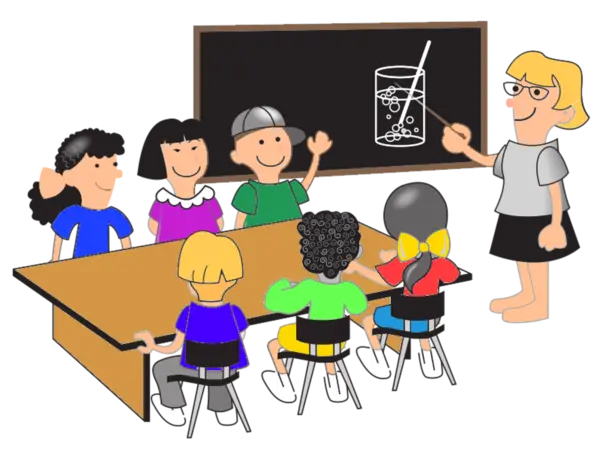
8. Executing new teaching methods
Embracing new teaching methods is crucial for keeping classrooms dynamic and students engaged. But implementing them effectively requires careful planning, adaptation, and a dash of enthusiasm!
9. Grading tests
Grading tests is indeed a significant responsibility for teachers, but its importance extends beyond simply assigning numerical scores.
10. Learning and Adapting
Learning and adapting are intertwined threads woven into the tapestry of successful living, both within the classroom and beyond. Let’s explore the essence of this dynamic duo:
Continuous Learning:
- Growth Mindset: Embracing a growth mindset, the belief that intelligence and abilities can be cultivated through effort and learning, fuels the drive to continually seek new knowledge and improve.
- Curiosity and Exploration: Maintaining a childlike curiosity, asking questions, and actively seeking out new experiences keep one’s mind engaged and expand the horizons of understanding.
- Formal and Informal Learning: From formal education and professional development to self-directed learning and everyday experiences, embracing diverse learning opportunities leads to continuous personal and professional growth.
11. Providing a safe learning environment
Providing a safe learning environment is one of the most critical responsibilities of a teacher. It goes beyond ensuring physical safety and delves into creating a space where every student feels secure, respected, and supported to learn and grow.
12. Providing feedback
Teachers primarily design and deliver feedback to students on their learning progress. This includes formative feedback throughout units, summative feedback on assessments, and personalized feedback tailored to individual needs.
13. Supervising students
The responsibility of supervising students rests heavily on the shoulders of teachers, but it’s not a singular, static burden. It’s rather a multifaceted and fluid role that encompasses various aspects of the learning environment:
- Ensuring Physical and Emotional Safety
- Classroom Management
- Social-Emotional Support
- Emergency Preparedness
- Guiding Academic Progress
- Monitoring and Assessing Learning
- Providing Individualized Instruction
- Promoting Academic Integrity
14. Understanding the curriculum
In the symphony of education, the teacher plays the crucial role of conductor, interpreting the complex score of the curriculum into an engaging and impactful learning experience.
This responsibility demands a deep and nuanced understanding of the curriculum, weaving its threads into every aspect of their work.
Effective teachers don’t merely recite facts; they translate them into digestible lessons, adapting their approach to cater to the diverse needs of their students.
This understanding fuels targeted assessments, where they craft questions and tasks that accurately reflect the curriculum’s goals and measure student progress.
Beyond knowledge, they bring the curriculum to life through captivating activities, sparking student interest and solidifying their understanding.
Their expertise also allows for creative differentiation, tailoring instruction to diverse learning styles and abilities to ensure no student gets left behind.
But this responsibility doesn’t end with initial delivery. A true understanding of the curriculum empowers teachers to be catalysts for continuous improvement.
They identify gaps in student learning and adapt their approaches, ensuring the orchestra of education plays in perfect harmony, with every student reaching their full potential.
15. Classroom Management
Within the bustling symphony of a classroom, the teacher isn’t just a conductor, but also the architect and maestro of the entire performance.
And the foundation of this performance? Effective classroom management. It’s not just a responsibility entrusted to teachers, it’s the very fabric of their work, woven into every interaction, decision, and action.
Why? Imagine a concert hall where instruments clash, audience chatter drowns out the music, and chaos reigns. Learning, like beautiful music, requires a harmonious environment.
This is where classroom management takes center stage. By setting clear expectations and routines, teachers establish a foundation of respect and predictability.
They become gentle enforcers, ensuring disruptions are minimized and learning can flourish.
But it’s not just about rules and consequences. Effective classroom management also involves building relationships.
Teachers become mentors, confidantes, and cheerleaders, understanding individual needs and creating a space where students feel safe to explore, fail, and grow.
They ignite curiosity, weave engaging activities, and foster collaboration, transforming the classroom into a vibrant tapestry of learning.
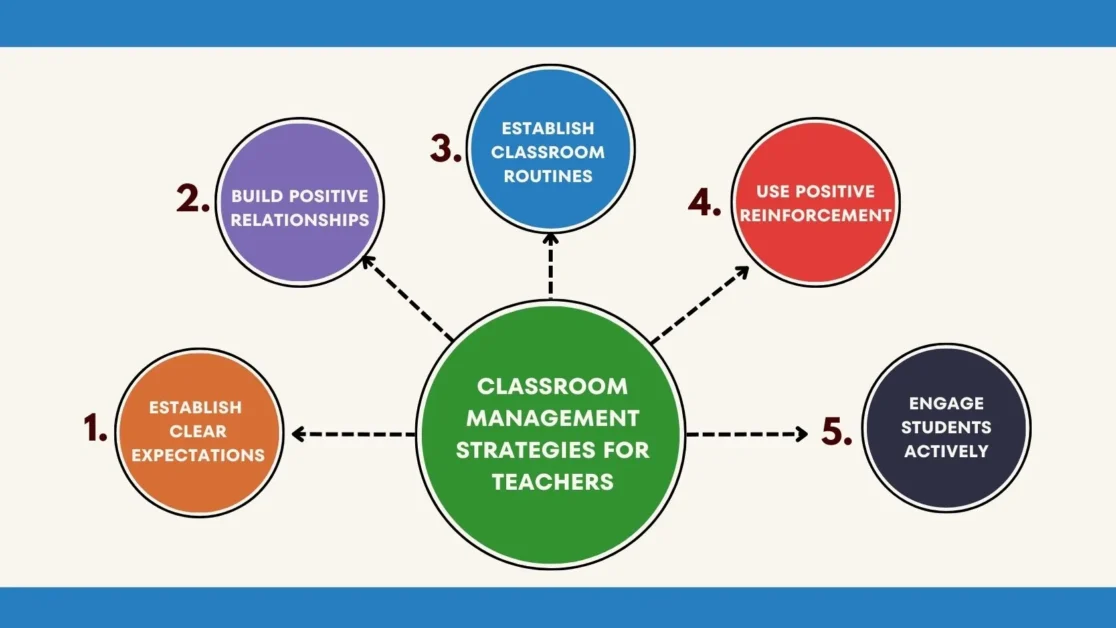
16. Evaluation and assessment
In educational dance, teachers not only choreograph the steps but also assess the elegance and precision of each move.
Evaluation and assessment are more than just checking boxes; they’re the teacher’s microscope, zooming in to understand student progress, refine instruction, and guide future learning.
Through quizzes, observations, and projects, teachers gather vital data, painting a nuanced picture of individual strengths and weaknesses.
This information fuels targeted interventions, differentiated instruction, and personalized learning journeys. It serves as a compass, guiding students toward goals and illuminating areas needing further exploration.
But assessment isn’t a solo act. Effective teachers involve students in the process, fostering self-reflection, ownership of learning, and a growth mindset.
Feedback becomes a two-way street, where students learn to analyze their performances and set their own improvement goals.
Ultimately, evaluation and assessment aren’t punitive tools, but instruments of growth.
They ensure the educational dance, with its countless pirouettes and leaps, is purposeful and progressive, leading every student towards mastery and personal fulfillment.
17. Inspiration
In the vibrant dance of learning, a teacher’s heart beats with the rhythm of inspiration. Their passion for the subject becomes infectious, igniting sparks of curiosity in young minds.
They believe in each student’s potential, like gentle gardeners nurturing delicate blooms. By setting achievable challenges and celebrating effort, they empower students to stretch their wings and soar beyond their comfort zones.
Discovery dances hand-in-hand with guidance, where mistakes become stepping stones on the path of learning.
Perhaps teachers lead by example, their authenticity a beacon that illuminates the path forward, inspiring students to not just learn but to live with purpose and passion.
Inspiration blooms in the fertile ground of a teacher’s dedication, shaping not just minds, but hearts and futures.
18. Creating and distributing educational content
Teachers aren’t just dispensers of facts; they’re weavers of knowledge, crafting engaging tapestries of lessons that blend skills and understanding. But content alone isn’t enough.
They explore their students’ needs, tailoring materials to ignite curiosity and fuel exploration. Walls melt away as they build learning universes, sharing content through diverse platforms and spreading the wings of knowledge beyond the classroom.
Yet, this creative symphony isn’t solitary. Teachers collaborate with peers, invite experts, and weave a collective web of education.
And through it all, they’re lifelong learners themselves, constantly evolving and refining their content to build bridges toward student success.
The responsibility of creating and distributing educational content transforms teachers into architects of learning journeys, shaping minds and futures one engaging thread at a time.
19. Leveraging technology to support learning
In today’s tech-rich tapestry, teachers aren’t just weavers of knowledge, but digital alchemists too.
Leveraging technology is no longer an option, but a responsibility, transforming textbooks into interactive portals, lectures into multimedia journeys, and homework into collaborative quests.
It’s about using AI to personalize learning paths, VR to explore distant lands, and social media to build global communities of knowledge.
It’s about bridging the digital divide, ensuring no student gets left behind in the tech-fueled evolution of education.
Ultimately, a teacher’s embrace of technology isn’t just a trendy tool, but a powerful lever, opening doors to limitless possibilities and igniting a lifelong love of learning in every student’s heart.
20. Encouraging student participation
Within the classroom’s vibrant ecosystem, a teacher nurtures not just minds, but voices. Encouraging student participation is more than a duty; it’s the sun that fuels the growth of curiosity, confidence, and critical thinking.
Through open-ended questions, safe spaces for debate, and opportunities for diverse expressions, teachers weave a tapestry of engagement.
They celebrate contributions, big and small, fostering a chorus of ideas where every voice finds its melody. And as participation blossoms, so collaborates, turning the classroom into a fertile ground for teamwork and shared discoveries.
Ultimately, teachers who champion participation become architects of an empowered learning community, where each student’s unique spark illuminates the path for all.
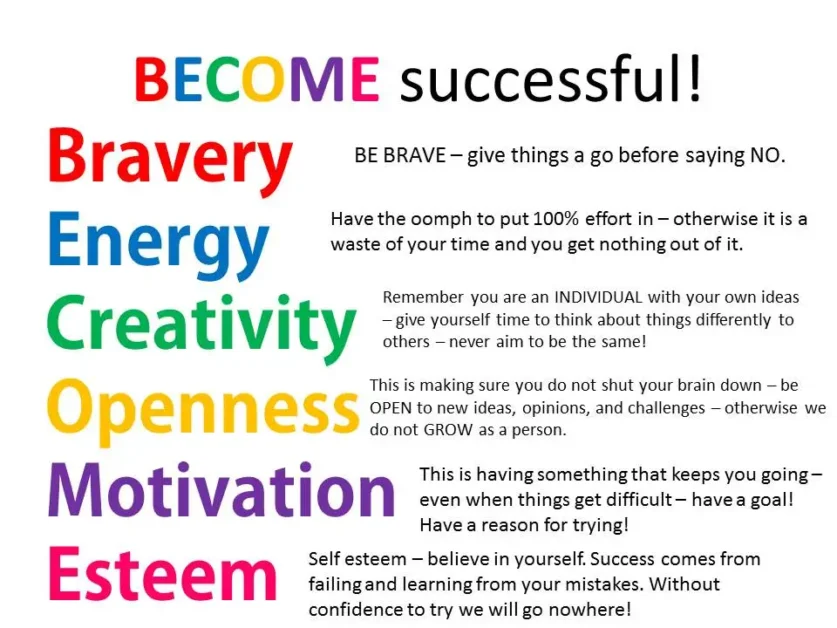
FAQs
What are the 7 qualities of a good teacher?
Passionate Explorer: They spark curiosity and love for learning through their own infectious enthusiasm.
2. Master Communicator: They make complex ideas clear and engaging, adapting to different learning styles.
3. Subject Sage: Their deep understanding allows them to connect concepts, answer unexpected questions, and tailor lessons to individual needs.
4. Empathetic Ally: They create a safe and supportive environment where students feel valued and respected.
5. Creative Architect: They design engaging lessons using diverse methods, activities, and technology to keep students captivated.
6. Organizational Maestro: They manage time effectively, set clear expectations, and establish routines for smooth learning flow.
7. Lifelong Learner: They embrace a growth mindset, continuously seeking to improve their skills and stay updated on new teaching methods.
What is the role of a good teacher?
A good teacher isn’t just a knowledge dispenser, but a learning architect.
They ignite curiosity, craft tailored journeys to understanding, and build communities where minds flourish.
Beyond academics, they shape character, instilling values, confidence, and a love for lifelong growth.
As champions of connection, they foster collaboration, bridge gaps, and nurture global awareness, leaving a lasting impact on the hearts and minds of their students.
What does a teacher do?
Teachers serve as educational guides, nurturing a dynamic learning environment where students thrive.
They instruct, using diverse teaching methods to convey lessons effectively, and engage students through interactive activities.
Beyond knowledge dissemination, teachers foster personal growth, offering guidance, support, and encouragement.
They manage classrooms, maintaining order while inspiring curiosity and critical thinking.
Additionally, they assess students’ progress, provide feedback, and adapt teaching strategies to meet individual needs. Ultimately, teachers are not just educators but mentors, shaping the minds and characters of future generations.

